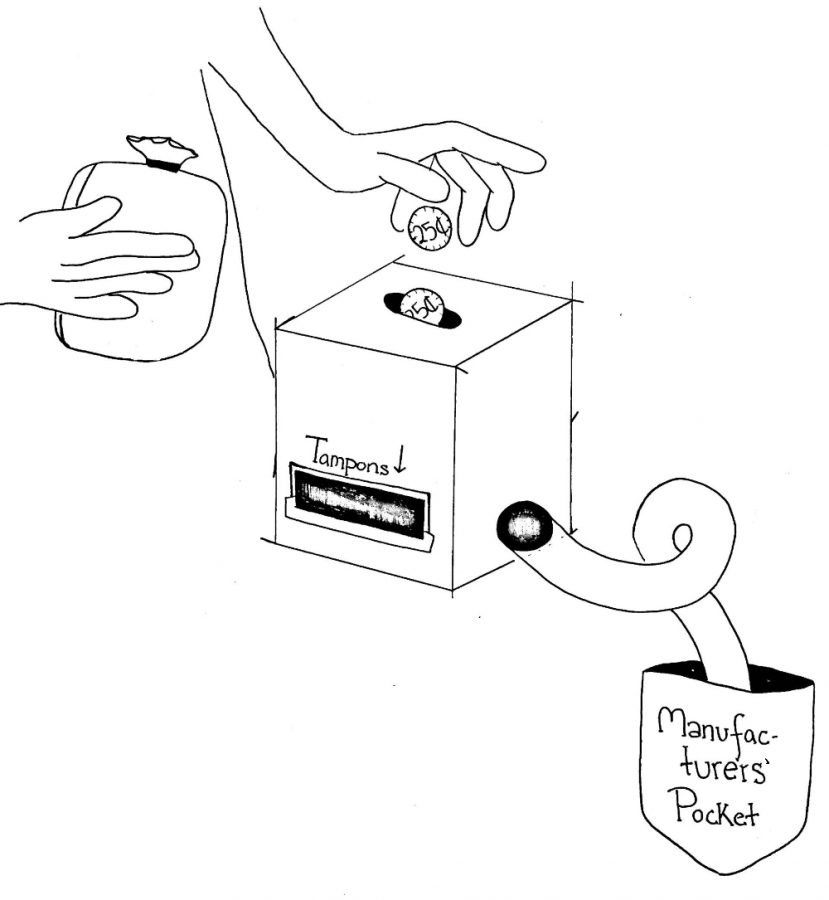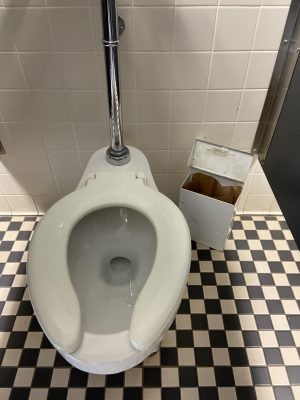Feminine product dispensers trivialize period struggles
Monetizing feminine products implies that they’re nonessential when they are fundamental for many. The fact that people who menstruate are being charged for feminine hygiene products is both unfair and an insult to those who need them.
September 6, 2021
Anyone with a uterus knows it can sometimes be a real pain. Periods are already difficult to deal with, and, now, students must pay to take care of them at school.
Midtown students who use the female restrooms may have noticed the newly-added menstruation product dispensers, requiring a payment of 50 cents for a tampon or pad.
Monetizing these products implies they’re nonessential when they are fundamental for many. According to Huma Farid of Harvard Medical School, menstrual hygiene products are necessities, not luxuries, and should be treated as such.
People who menstruate can experience cramping, nausea, light to heavy bleeding, mood swings, depression and anxiety, bloating and other effects during their periods. Having access to free products can minimize the mess and make the day at least a little more bearable. While some products are still being provided, as in years past, free in restrooms, other restrooms only have the paid dispensers.
The idea that people should pay or come prepared with their own products is also absurd. Periods can be, especially with teens, irregular. Liza Torborg of Mayo Clinic found that teens often have irregular cycles because their bodies have not settled into a pattern of regular menstrual cycles, but, in time, they become shorter and more predictable.
Even people who menstruate and have a consistent cycle can have irregular periods. Stress and hormonal imbalances are among the main factors, but medications, physical activity levels and body mass can cause cycles to be difficult to predict.
Emergency situations, such as irregular periods, force uterus owners to pay for the necessary products themselves.
Fifty cents for one tampon or pad may not sound bad, but these products have to be frequently changed. Just to get through one school day, the average cost is a dollar worth of quarters. As very few people still carry change, the blatant inconvenience that already exists with having a period only increases, as uterus owners are expected to always have quarters on them to purchase menstruation products.
The cost of feminine hygiene products isn’t much cheaper when people bring their own products, either. According to the Duquesne University School of Nursing, women have an average of 456 periods in their lives, which translates to 9,120 tampons, used and the total amount women spend on tampons is approximately $1,773.33.
Midtown students can’t be expected to constantly keep up with these additional payments from buying extra supplies at school. Furthermore, they can’t always be prepared for every inconvenience caused by their uteruses.
There’s always the option of quickly going to the C200 hall bathroom to grab a product from the small box there with free products, but that conflicts with time that students should be using for school. Asking a friend for a product can also often seem embarrassing, and to just be expected to always carry quarters is just a nuisance.
While these dispensers may seem like a convenient, accessible way for students to get menstruation products, the pure bother of accessing them negates any possible helpfulness.
The fact that people who menstruate are being charged for feminine hygiene products is both unfair and an insult to those who need them. It’s a way of simultaneously recognizing and disrespecting the innate struggle that women go through.







